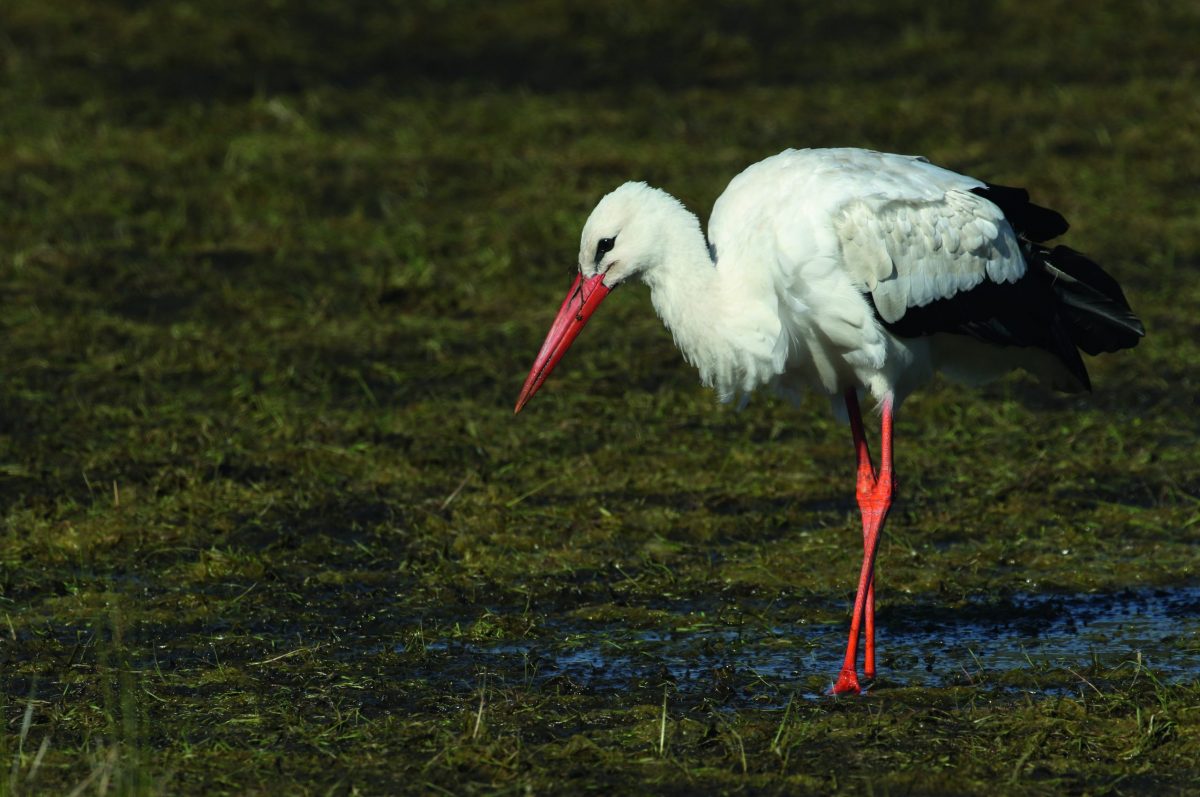How dairy farms can be good for biodiversity
The first sighting of a white stork in the area for more than 10 years is welcome proof that dairy farms aren’t a black hole of biodiversity

The stork was likely a European bird, but there have been successful reintroductions in Sussex
Driving around the intensive, monocultural, factory-farmed, Anthropocene bio-desert that is my farm, I am always amazed at the number of birds I see, which are nevertheless happy enough with what we are doing to make it their home. At this time of year rooks, jackdaws, wagtails and starlings are swarming across the dairy pastures to peck about in the cowpats for a smorgasbord of assorted bug life. Up above, swallows and sand martins circle endlessly as they harvest midges and other small flies that have been attracted by the cattle, while the hedgerows are rich with blossom, yellowhammers, warblers and finches.
In fact, contrary to what you might expect from the narrative peddled by ‘environmentalists’ on our public service broadcasting channels, pasture-based dairy farming attracts more birds, and therefore also birdwatchers, than I had ever imagined it would when I took the plunge and re-established a dairy here two years ago after a 40-year absence. But never in my wildest dreams did I ever think that I would one day be looking across the field behind the village and spotting a stork.
Snacking
The white stork — other storks are available — appeared from nowhere, or, presumably, from Africa, on 17 April. I tweeted a video of the bird stalking, or even storking, about snacking on frogs near a large puddle in the middle of the field. The twitchers descended on us the next morning and the bird obliged them by hanging around so that it could have its photograph taken.
Speculation mounted in the village as to what it might mean, and our lovely and sainted office manager, who keeps several dairy businesses properly accounted for, and keeps the village school afloat with her numerous children, was forced to put out a statement saying that it did not mean she was having another baby.
The power of recall in the digital age confirmed within minutes that it was the first sighting of a stork in Dumfries and Galloway for 12 years. Summer resident storks became extinct in the UK in the early 1400s. There is a successful reintroduction programme that started at Knepp Castle in Sussex, where they have them nesting in oak trees and chimneys. But this one wasn’t ringed and it seems unlikely that they are already probing this far north. It was most likely a European bird that was geographically embarrassed. It would be wonderful to think, though, that they might one day be a regular sighting here like the egrets.
Meanwhile, in the surrounding fields the lapwings have been struggling to breed. We have seen them regularly but have yet to identify any nests, which we would normally fence off against grazing cattle and foraging badgers. The fields are being staked out by corbies (as we call carrion crows in this part of the world). We are doing what we can with Larsen traps but there seems to be a lot of them this year. Maybe that is because bird flu has cut a swathe through the buzzards and red kites, so the corvids have fewer enemies.
Jake Fiennes, conservation manager at the Holkham Estate, has posted some useful lapwing conservation ideas on social media, which I pass on. In arable fields he finds the nests then records their location with the What3Words app, which he logs on the contractors’ GPS systems so that they can be avoided. He has also made protective covers out of pallets, which are placed over each nest while muck is spread. When the pallet is removed, the bird returns to its nest and the nest site shows up as a pale square that can be avoided when the seed drill does its stuff. Genius.








